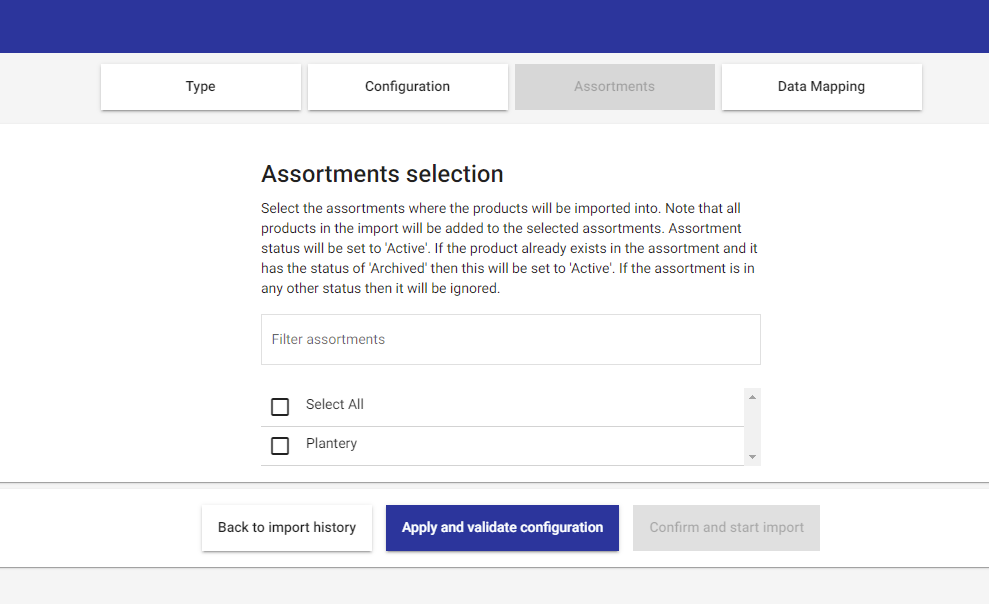An assortment is for managing which products can be sold from a store and purchased into a store, on a more fine-grained level (separately for each store).
An assortment would be a list of products. Each item in an assortment may have a status: active, not for sale, no longer ordered, archived.
An assortment can be associated with a warehouse. If the location does not have an assortment applied to it, all products can be sold and purchased freely.
Assortments
To create, edit and see your assortments, navigate to PIM -> Manage Product Catalog -> Channels/Assortments in the back office.
If you want to create a new assortment, simply click on the New button. To edit, delete, or duplicate an assortment, you need to choose one and click on the respective button.
To tie an assortment to a location, you need to navigate to Inventory -> Locations, choose the location you wish to edit, and under Miscellaneous -> Assortment, choose the right one.
To Add Items to an assortment, you need to click the button of the same name. Here You can filter your product list and choose the products you want to be available in shops tied to this assortment.
Products in the assortment can be removed by selecting them on the left side of the product row and clicking on Remove Selected.
To change the Status of the product, double-click on the Status in the Status in assortment column and choose another label. An assortment status can further limit what can be done with the product, but it cannot give additional rights.
Note: Currently there is no way to change Status labels en masse inside an assortment.
For example:
if product is Archived on product card, Active in assortment → you cannot do anything with that product. (Product card does not allow it.)
if product is Active on product card, No longer ordered in assortment → you can only sell it. (Assortment prevents you from ordering.)
if product is Not for sale on product card, No longer ordered in assortment → you cannot do anything with that product. (Product card prohibits selling, assortment prohibits purchasing)
Assortment Import
There are currently two ways to import assortments.
From Channels/Assortments
You can import products into an existing assortment in PIM -> Manage Product Catalog -> Channels/Assortments.
Select an assortment and click on the Import From File button on the right side of the screen.
To do this, your file must be in .csv format, where the first line must contain “productId” and then the product IDs, each on a separate line. Keep in mind that these are product IDs, not EAN codes.
Usin this import option, you do not need to map anything yourself. If the file is added to this window, the program will try to do the import automatically.
The format of the CSV file must be correct and cannot contain any other information.
An example file can be downloaded HERE.
From Product Importer
You can also import products into assortments using the Product Importer. For this, navigate to PIM -> Import Products.
Choose your importing file. The file has to have at least one column, consisting of one thing that can be used to match to existing products.
The most common of these are Product ID, Product Code, or Product UPC/EAN.
Simply map the identifying column to the code type (if you use Product IDs to match to existing products, map that column as Product ID and so on). Now you only need to go to the Assortments tab and choose, which assortment you want to add these products to.
Note: This function brings all of the products in the file into the assortment.
Apply and validate configuration and you're good to go!
